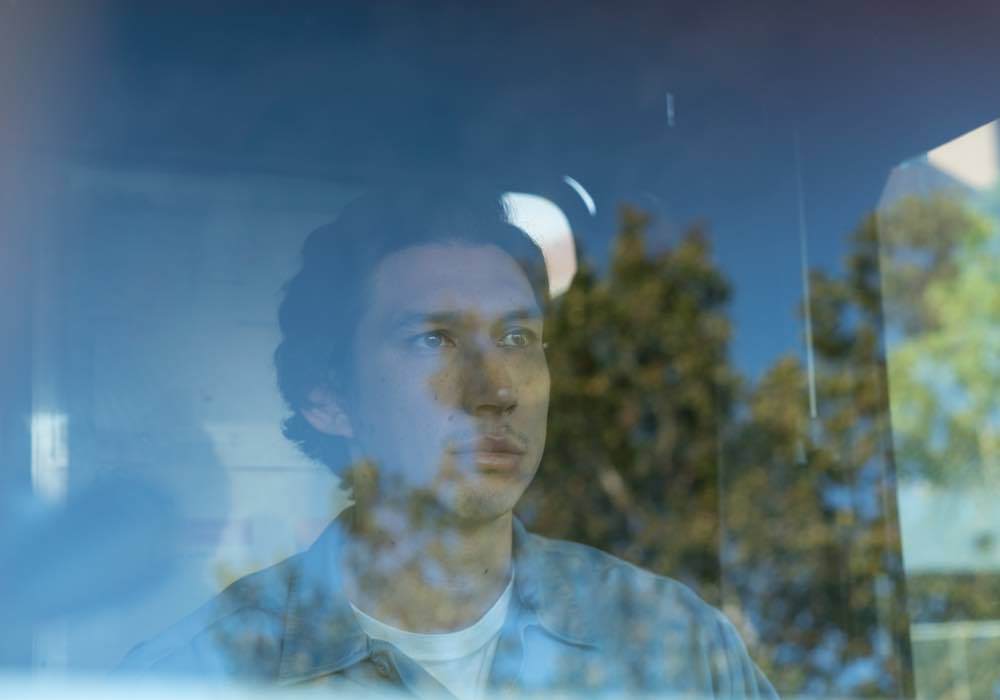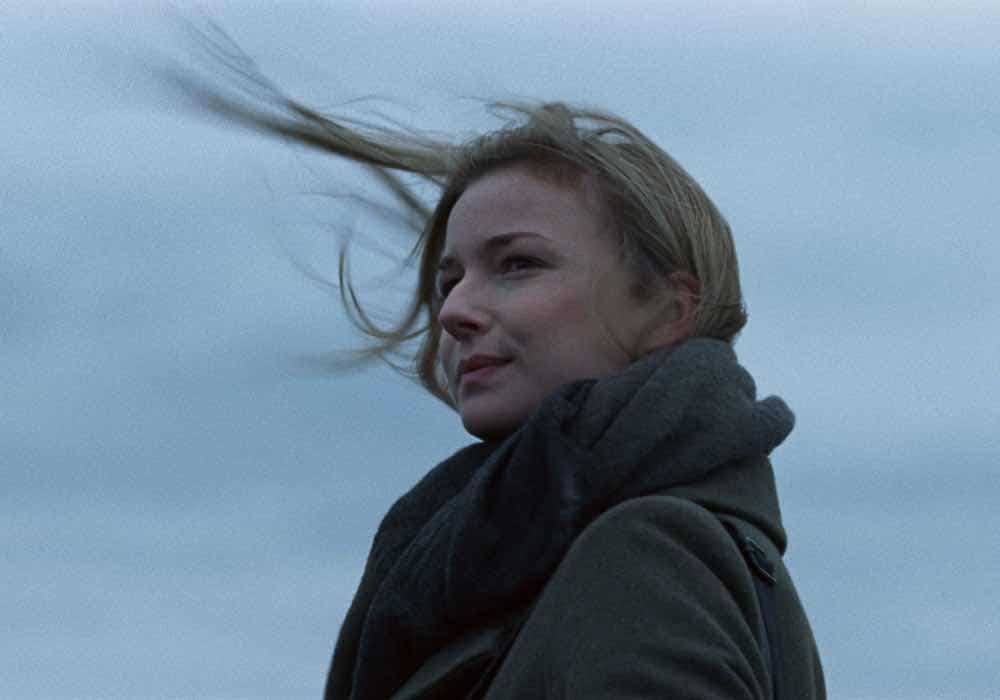Alex Heeney conducts an interview with writer-director Kelly Reichardt about Certain Women and analyses how Reichardt uses framing and sound to tell a story of breaching personal boundaries through breaking cinematic ones.
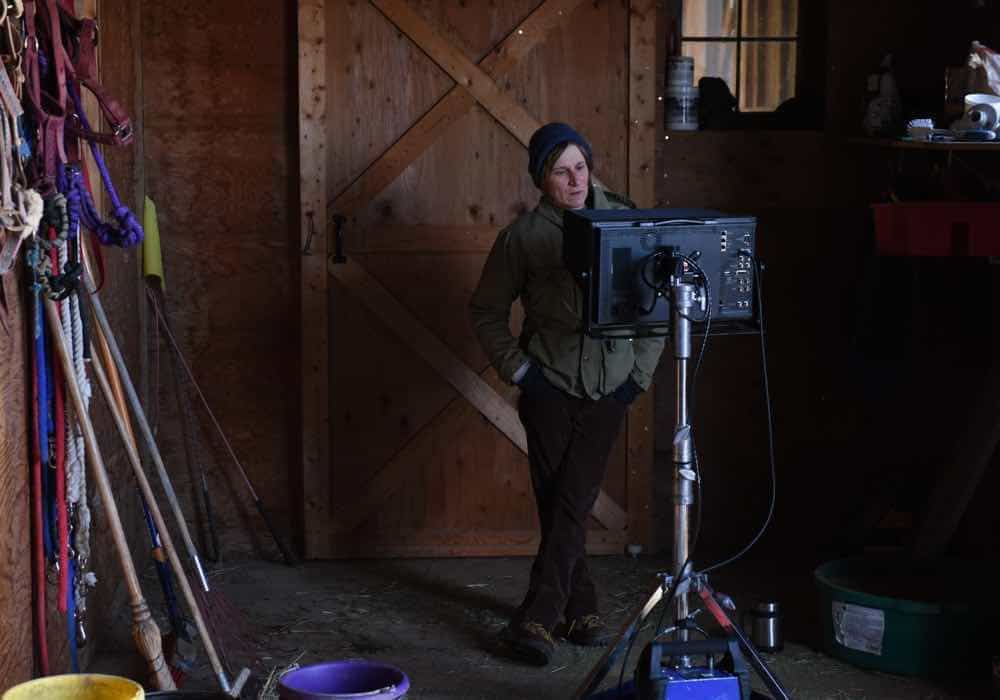
Certain Women interview: Kelly Reichardt on breaking boundaries.
Photo by Jojo Whilden. Courtesy of IFC Films.
Not much happens on the surface in Kelly Reichardt’s Certain Women, but these small stories have big emotions and ideas. A lawyer (Laura Dern) having an illicit affair is pestered by her dogged former client. An entrepreneur (Michelle Williams) seeks to buy rocks from a local friend to use in the house her husband is building for her. And a ranch hand (Lily Gladstone) becomes enamored with a young lawyer from the city (Kristen Stewart) who teaches a night class in town.
All of the interactions in the film find people talking to each other without quite listening to or hearing one another, with women’s voices most often falling on deaf ears. But the film is as much about the ways in which our personal space is invaded, the way we invade others’ spaces — sometimes, just by insisting on being heard — and how we create our own prisons, even as we seek to liberate ourselves.
Certain Women is both a series of character studies, and a look at the Montana landscape and the characters’ relationship to it. Based on short stories from Maile Meloy’s collections Half In Love and Both Ways Is the Only Way I Want It, the film’s three vignettes are each, first and foremost, a character study of a woman with a purpose, who knows what she wants, or thinks she does. Short as they are, each vignette fleshes out the people in these women’s lives who define them, constrain them, and challenge them. The film starts with the oldest and most settled character, and with each story, finds a younger, less settled protagonist: it’s almost like looking backward in time, from a settled Westerner to those still young enough to be finding their land and their place in the world.
[clickToTweet tweet=”Reichardt finds meaning in the ways the characters relate to each other and their spaces, physically.” quote=”Reichardt finds meaning in the ways the characters relate to each other and their spaces, physically.”]
Kelly Reichardt finds meaning in the ways the characters relate to each other and their spaces, physically. Each frame’s composition reveals so much emotional content. Reichardt’s exquisite framing is particularly impressive given that her process is to let the actors do their thing, follow them around for coverage, and then cut the performances together. “You’re kind of setting everyone into their space,” Reichardt elaborated, “and trying to shoot them in a way where you pick up how everyone is responding to each other and then how they are in the world, the greater space.”
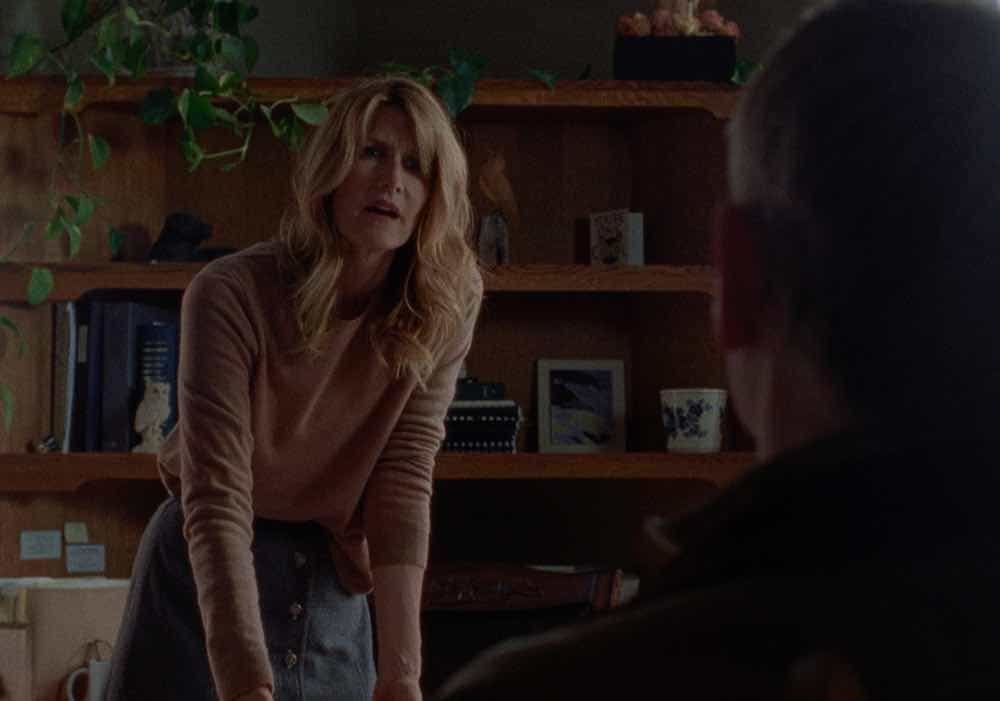
Certain Women interview: Kelly Reichardt on breaking boundaries.
Photo by Jojo Whilden. Courtesy of IFC Films.
Read more: Director Francis Lee on his Sundance Winner God’s Own Country >>
In the first vignette, Reichardt tells a story of breaching personal boundaries through breaking cinematic ones. Laura may be the oldest, most professionally successful protagonist, but when it comes to her personal life, she’s the one invading another’s space. In the first scene, we watch Laura and her married lover, Ryan (James Le Gros), getting dressed at opposite ends of the frame, divided by a wall: he’s in the hallway while she’s in the bedroom. It’s an intimate moment, as they prepare to leave the hotel where they met for an afternoon encounter, but they’re physically separated, disjointed within the frame. We watch Ryan dress in the room, but we only see Laura reflected in the mirror next to him. She can only enter his space by invading the frame, like through a playful kick to his back where her foot enters the picture. They’re on borrowed time, and she’s boxed out of his life.
[clickToTweet tweet=”Reichardt tells a story of breaching personal boundaries through breaking cinematic ones.” quote=”Reichardt tells a story of breaching personal boundaries through breaking cinematic ones.”]
Laura is constantly dealing with men who don’t respect her or listen to her, and Reichardt allows these men to intrude on Laura’s personal and cinematic space. Her former client, Fuller (Jared Harris), who keeps showing up at her office without an appointment. When he gets into a fight with his wife after a meeting he had with Laura and an out of town lawyer, he hops into Laura’s car for a ride without asking. As Reichardt trains her camera on Laura in a closeup, as if trying to keep Fuller out of her headspace, sounds of his complaints can be heard, forcing her to pay attention to him. Yet as a white settler in the west, Laura is herself an invader, though she’s as oblivious to this as the men who bother her: she is the only character we see regularly passing by Native Americans, in the mall or at the fast food restaurant.
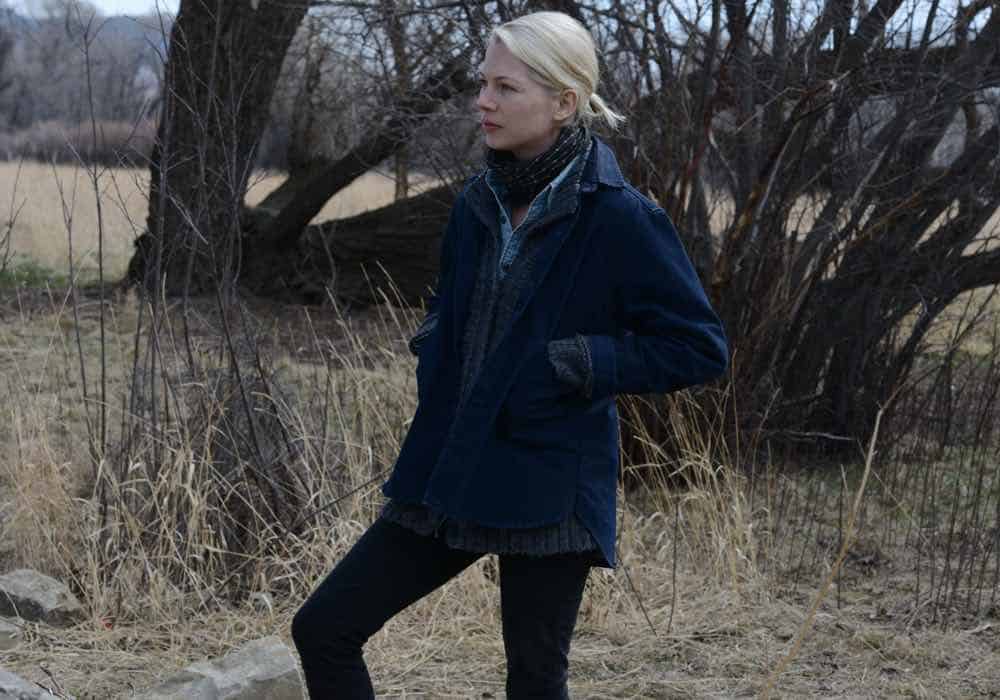
Certain Women interview: Kelly Reichardt on breaking boundaries.
Photo by Jojo Whilden. Courtesy of IFC Films.
Read more: Writer-director Anne Émond talks Nelly >>
In the second vignette, we meet Gina (Michelle Williams) on an outdoor path in running gear, but she’s walking and smoking. It’s clear she’s escaping, hiding from something, and it’s only when she’s alone that we see her at peace. As she approaches the yurt where she lives with her husband and cranky teenage daughter, there’s a sense of apprehension and impending doom: Reichardt frames the makeshift home in a wide shot, at the back of the frame, an ominous place to approach.
Gina also walks a fine line between predator and prey. The men in her life dismiss her, talk over her, or even ignore her, often moving in the frame to take over her space. But her main motivation in this story is to prey on one of these men, her elderly family friend Albert (Rene Auberjonois). He is in possession of some rocks that she wants to buy for the house her husband is building her. She initially thinks Albert doesn’t want them, but when she learns that’s not quite the case, she’s willing to be manipulative to get them. Yet her excitement over the construction of a more permanent home, the driving force of her narrative, seems ironic: if their temporary home feels forbidding, surely a more permanent one would only ensure her imprisonment. Is she more dangerous to anyone than herself?
[clickToTweet tweet=”Few actors can listen with as much intensity and interest as Michelle Williams does. ” quote=”Few actors can listen with as much intensity and interest as Michelle Williams does. “]
Williams is the under-appreciated MVP of the film, giving a performance full of heartbreaking, subtle, physical detail. Few actors can listen with as much intensity and interest as Williams does. One of the best scenes in the film is an extended closeup on her as she listens to Albert willfully ignoring what she’s said in favour of talking her ear off. She nods politely, trying not to show she’s hurt by the insult, because she has a goal and needs something from him.
Reichardt, who edits her own films, only identified this extended closeup as the focal point of the scene during the edit. On set, her focus is on “the motion of the scene and what the essence of the scene is.” She always shoots coverage because she doesn’t want to “miss the emotion of the scene,” meaning she has to be ready to react and respond to the actors’ performances. “A whole different movie presents itself in the editing room, and it’s nice to have options,” Reichardt elaborated. “There’s not a ton of takes. You cover it because the listening is important. You’re going to find out through the performances somewhat. You have your idea of where you’re going to be, but it’s nice to be able to adjust.” In this scene, “Gina is the character that we’re most concerned with in that, so watching her respond is where you want to be.”
[clickToTweet tweet=”Reichardt always shoots coverage because she doesn’t want to ‘miss the emotion of the scene’.” quote=”Reichardt always shoots coverage because she doesn’t want to ‘miss the emotion of the scene’.”]
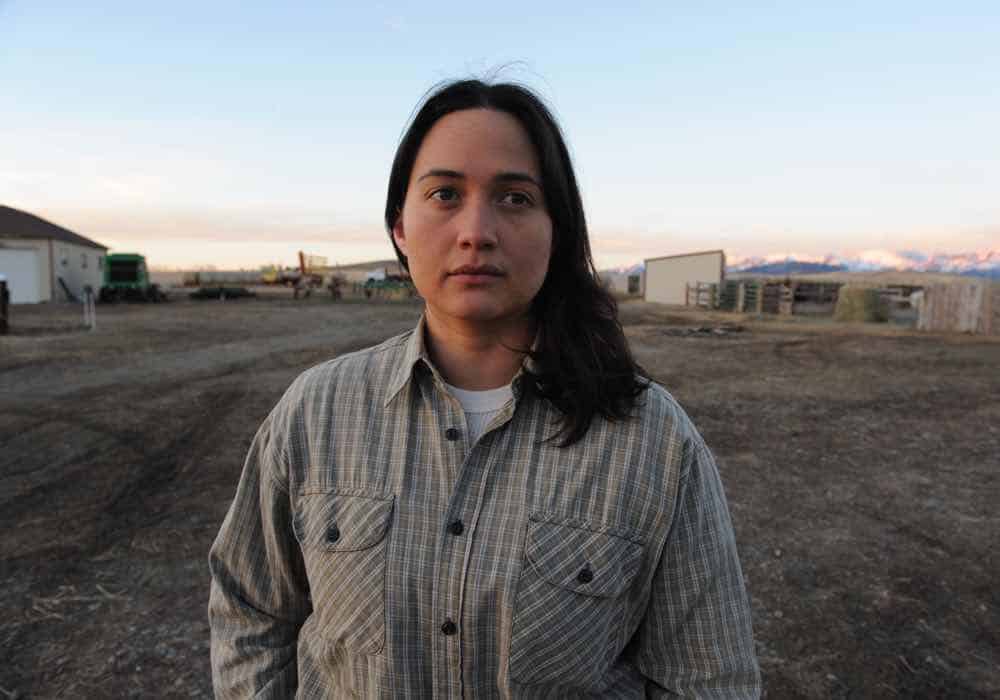
Certain Women interview: Kelly Reichardt on breaking boundaries.
Photo by Jojo Whilden. Courtesy of IFC Films.
Read more: Sarain Fox and Michelle Latimer on their VICE series RISE, telling Indigenous stories >>
The final story follows the youngest protagonist, a nameless twentysomething rancher (Lily Gladstone), who is most connected to the land and the only one without her own property — particularly ironic given that she’s the only Native American character. She spends her days tending to the horses, the dogs, and the farm, riding around on a tractor. Each morning begins with her pushing the stable door open, revealing a wide, snow-covered vista: the slow reveal of light in the frame gives us the sense that only outdoors is there peace and freedom.
Gladstone’s Rancher is also the most vulnerable character and her story of quietly pushing others’ boundaries is the one with the most devastating and immediate personal consequences. It’s also the only story devoid of men. On a lark, the Rancher decides to sit in on a night class taught by a city lawyer, Beth (Kristen Stewart), with whom she becomes quickly enamoured. Like Gina, Gladstone does most of the listening, with any attempt to share in kind foiled by her self-absorbed companion. In the small town, where Beth knows nobody and only comes to teach, a tentative connection can form. But when the Rancher tries to reconnect on a different turf, a sort of innocent invasion of Beth’s other life, things come crashing down.
Read more: Maren Ade talks Toni Erdmann, crafting performances >>
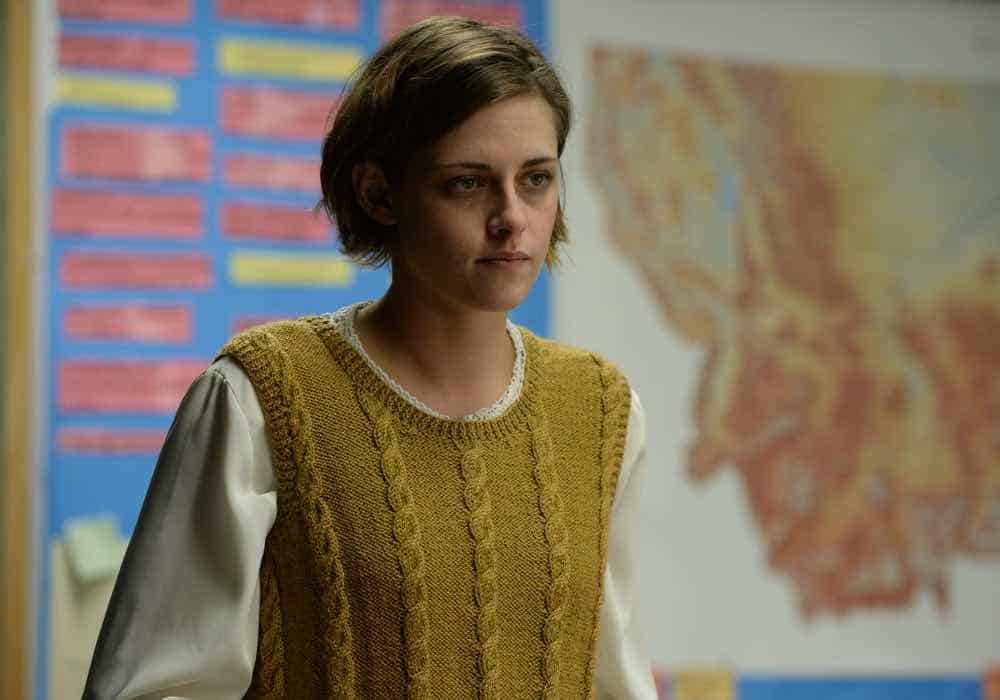
Certain Women interview: Kelly Reichardt on breaking boundaries.
Photo by Jojo Whilden. Courtesy of IFC Films.
“How to move out of one story to the next,” Reichardt noted, “was a big challenge because you just have to do it. You’re wondering if people are going to be bummed that you’re like, ‘OK, enough with that! Now we’re on to this’ — the way short stories are.” Part of the connective tissue between the stories is a consistent aesthetic. “I don’t want it to be like a salad of different approaches. You know that you’re on sticks and that your options are basically to pan. There’s an economy to it, which I think works with the story. You have your box of three lenses. It’s not like anything is going to get too crazy and you’re all of a sudden going to be in some whole other world. There’s no really long lenses in the movie. It has a kind of nuts and bolts approach to the aesthetic of it.”
[clickToTweet tweet=”You have your box of three lenses. It’s not all of a sudden going to be in some whole other world. ” quote=”You have your box of three lenses. It’s not all of a sudden going to be in some whole other world.”]
Each of the three stories starts with a shot of someone — or something — moving through the frame in the same geometry: a train, Gina, and the Rancher’s boots. The most urban story, about the eldest and most settled protagonist, has the most high tech object moving through the frame. But it’s Gina’s own boots we see shuffling, slowly, through the stable, in the opening of the third vignette, a gesture toward her connection to the land itself and the degree to which she is still untethered. In the first and last story, most of the movement within the frame is left to right; in the middle story, it’s right to left. The same movement pattern is true in the opening image of each vignette.
“The shot of Lily the Rancher’s feet,” Reichardt recalled, was inspired by a photograph that hangs over the bed where she regularly stays with a friend in upstate New York. “The room I stay in has a photo of this rancher’s boots, these legs of the rancher under a horse’s feet. And I’ve been looking at that picture for the 10 years I’ve been staying there. I don’t know who the photographer is, crazily enough, but I know that’s where that shot comes from.”
[clickToTweet tweet=”The camera is not supposed to distract. It’s about the characters and the place where they are.” quote=”The camera is not supposed to distract. It’s about the characters and the place where they are.”]
Reichardt switches between subjective closeups of her characters and more objective, wide shots, encapsulating the scenery. This creates a certain unity between the three stories that are only tangentially connected, because of the similar imagery and the focus on both the characters and the landscape. “You’re with them, you’re driving along with them, and you’re in the car with them,” Reichardt explained. “Occasionally, after a certain moment, you want to get further back, then we’re just part of the scenery, the viewer, and someone zooms by. It’s sort of just picking those moments of when you’re with them and when you’re stepping back to look at the whole. You want to see the forest for the trees. The camera is not supposed to distract. It’s about the characters and the place where they are.”
Read more: Review: A portrait of a poet in Paterson >>
